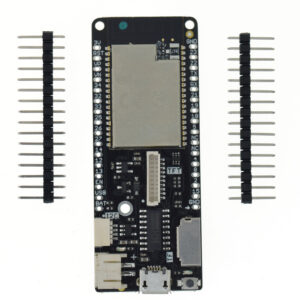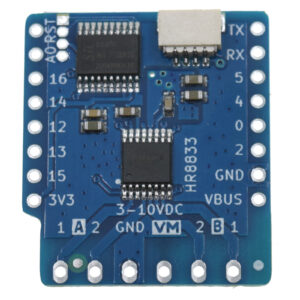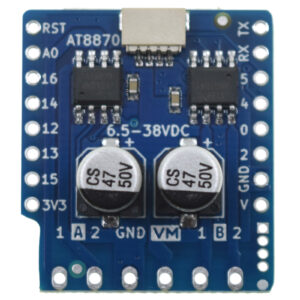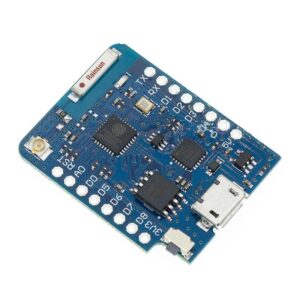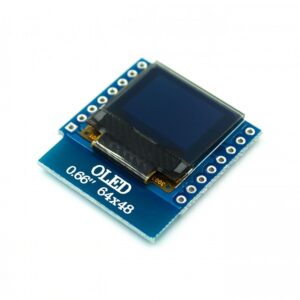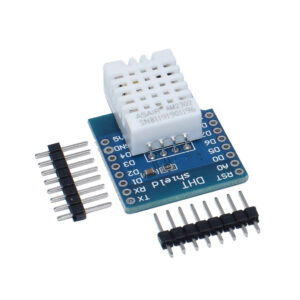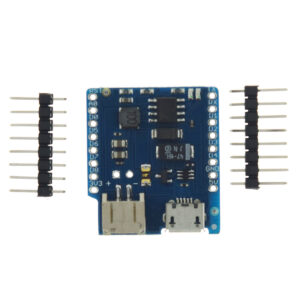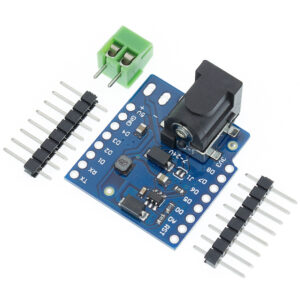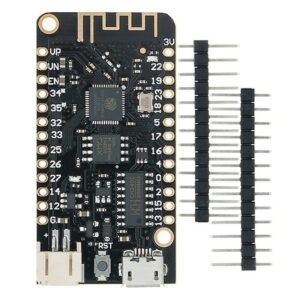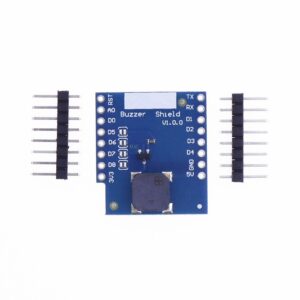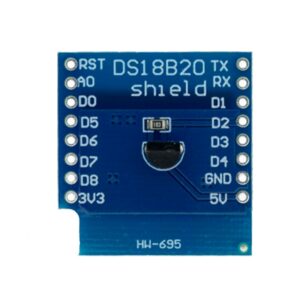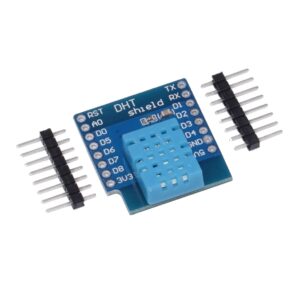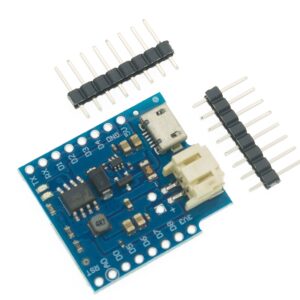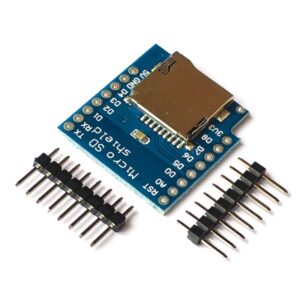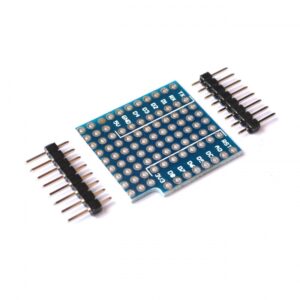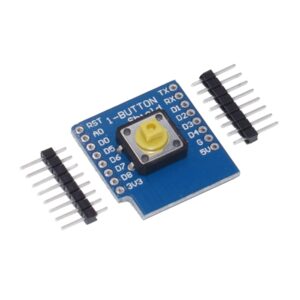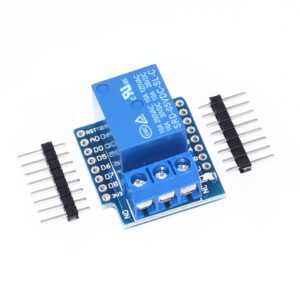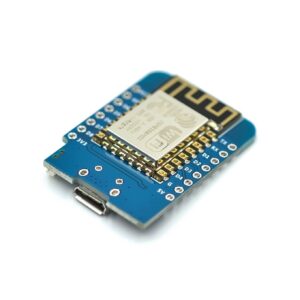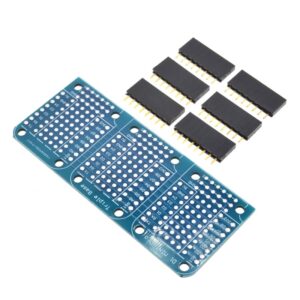Wemos D1 Mini Boards - WiFi & Bluetooth
Explore our range of Wemos D1 Mini boards and shields. If you’re looking for a powerful development board based on the ESP8266 Wi-Fi module, you’ve come to the right place!
What is a Wemos D1 Mini?
It is a compact and powerful development board that is best suited for creating Internet of Things projects. It is based on the ESP8266 microcontroller and has a small form factor, making it ideal for projects with limited space.
It is small and powerful and includes built-in WiFi connectivity, which allows it to connect to the internet and control devices remotely. Also has a range of input/output pins, including digital and analogue pins, which can be used to connect to sensors, switches and other devices.
Showing 1–24 of 26 resultsSorted by price: high to low
- £5.45Select options This product has multiple variants. The options may be chosen on the product page
Showing 1–24 of 26 resultsSorted by price: high to low
Key features of the Wemos D1 Mini
The D1 Mini boasts a range of features that make it an excellent choice for IoT projects. Some of its notable features include:
- Built-in Wi-Fi capability for seamless connectivity to the internet.
- Compatibility with the Arduino software environment, allowing you to leverage the vast Arduino libraries and community support.
- Compact size, making it easy to integrate into projects with limited space.
- GPIO pins for connecting external components such as sensors, actuators, and displays.
- Micro USB port for power and programming.
- Support for multiple programming languages, including Arduino and MicroPython.
Advantages of using the Wemos D1 Mini
There are several advantages to using the D1 mini boards for your next project:
- Cost-effective solution: affordably priced, making them accessible to both hobbyists and professionals.
- Rich community support: has a large and active community of users, providing a wealth of resources, tutorials, and support.
- Wide range of shields and accessories: Compatible with various shields and accessories, allowing you to expand its functionality.
- Flexible programming options: Whether you prefer Arduino or MicroPython, the boards supports multiple programming languages, catering to different skill levels and preferences.
- Versatile for IoT projects: With its built-in Wi-Fi and GPIO pins, is perfect for creating connected smart devices and IoT applications.
Also has a range of shields and modules that can be easily attached to the board to extend its functionality. For example, there are shields available for adding OLED displays, battery management, and additional sensors.
Overall, the Wemos D1 Mini is an excellent choice for anyone looking to create IoT projects or control devices remotely using WiFi. Its small size, ease of use, and compatibility with Arduino make it an ideal choice for both beginners and advanced users.
How to get started with the Wemos D1 Mini?
If you’re new to the Wemos D1 Mini, don’t worry! We’ve got you covered. Follow these steps to get started:
Setting up the Wemos D1 Mini
To set up the Wemos D1 Mini, you’ll need the following:
- Wemos D1 Mini board
- Micro USB cable
- Computer with Arduino software or MicroPython IDE installed
Simply connect the Wemos D1 Mini to your computer using the Micro USB cable, and you’re ready to go!
Installing the necessary drivers
If it’s your first time using the Wemos D1 Mini on your computer, you may need to install the appropriate drivers. Visit the official Wemos website for instructions on driver installation for your specific operating system.
Configuring the Wemos D1 Mini for first use
Before you can start programming the Wemos D1 Mini, you’ll need to configure it to connect to your Wi-Fi network. Follow the documentation provided with the board to learn how to set up the Wi-Fi credentials.
What can you do with the Wemos D1 Mini?
The possibilities are endless! The Wemos D1 Mini opens up a world of opportunities for creating your own projects. Here are a few ideas:
Exploring different projects and applications
From home automation to weather stations, the Wemos D1 Mini can be used in a wide range of projects. Get inspired by exploring project tutorials and examples available online.
Using the Wemos D1 Mini for IoT projects
The Wemos D1 Mini is an excellent choice for IoT projects. Its built-in Wi-Fi allows you to connect sensors, actuators, and other components to create smart devices that can communicate with the internet.
Integrating the Wemos D1 Mini with Arduino
If you’re already familiar with Arduino, you’ll feel right at home with the Wemos D1 Mini. The board is compatible with the Arduino software ecosystem, giving you access to a vast library of pre-built code and projects.
Choosing the right accessories and shields
To enhance the functionality of your Wemos D1 Mini, consider choosing compatible accessories and shields. Some popular options include temperature and humidity sensors, OLED displays, and relay modules.
Tips for troubleshooting common issues with the Wemos D1 Mini
While the Wemos D1 Mini is a reliable and versatile board, you may encounter some issues along the way. Here are some tips for troubleshooting common problems:
Troubleshooting connection and communication problems
If you’re having difficulty connecting the Wemos D1 Mini to your Wi-Fi network, double-check your Wi-Fi credentials and ensure that the board is properly configured. Verify if the Wi-Fi signal is strong and within range.
Dealing with compatibility issues
Compatibility issues can arise when using shields and accessories with the Wemos D1 Mini. Ensure that the shields and accessories you are using are compatible with the board and properly connected.
Frequently encountered errors and their solutions
If you encounter error messages while programming the Wemos D1 Mini, take note of the error and search for solutions in online forums and community resources. Often, others have encountered similar issues and can provide guidance.

